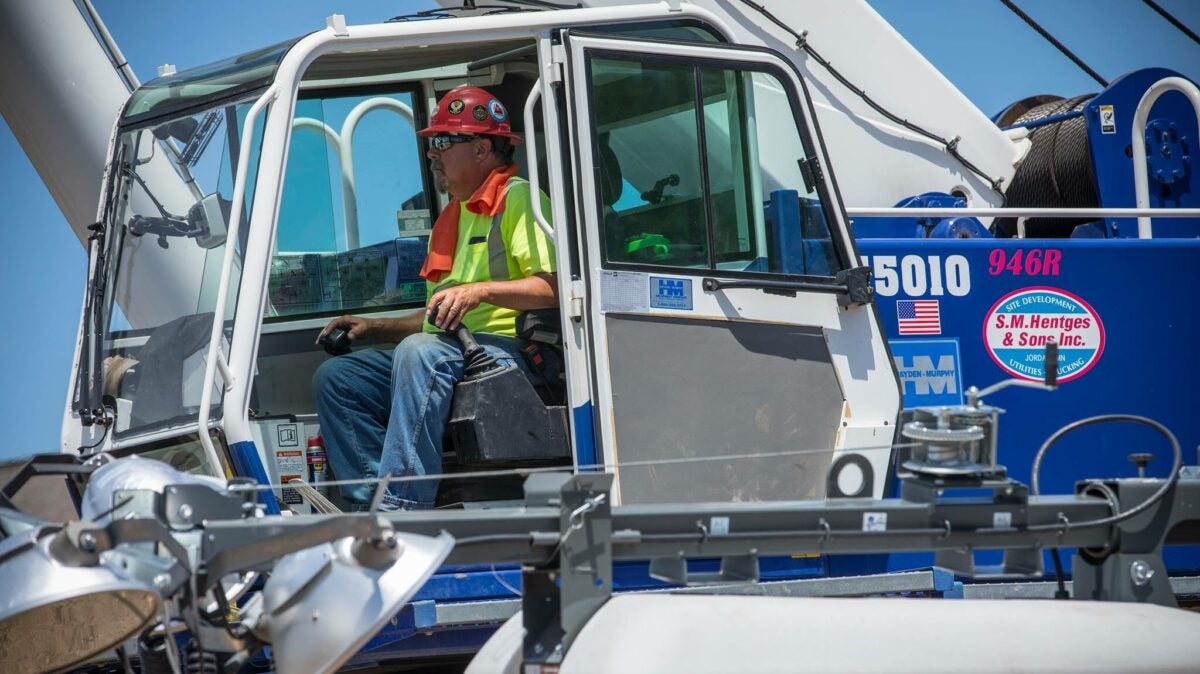We’re in the thick of summer, the prime season for road construction crews to get a lot of work done. With President Joe Biden striking a deal on his infrastructure plan and 40% of Americans planning on summer travel (similar to pre-pandemic levels), we may soon see a lot more workers out there. Their safety is key to getting projects done as efficiently as possible.
Related: Biden strikes deal on $1.2 trillion infrastructure package
One of the many challenges is keeping workers healthy when the weather turns on them. A brutal heat wave hit the Pacific Northwest for several days starting in late June, when temperatures reached record highs in the triple digits. On average, extreme heat kills more people in the U.S. than any other type of weather, and more heat waves are possible this season..
Ryan Overton is a communications specialist for the Washington State Department of Transportation’s (WSDOT) eastern region, which includes the city of Spokane. He couldn’t speak for contractors assigned to road projects in the region, but Overton said precautionary measures prevented heat-related incidents with his WSDOT inspectors and workers during the heat wave.
“Instead of coming at 6 a.m. and working until late afternoon, they came in several hours earlier, doing non-essential work [like training] in the afternoon where they could be in an air-conditioned space,” Overton told FreightWaves.
Also, several projects were done strictly during the late evening and overnight hours.
Overton added that crews have plenty of extra water on summer days, and WSDOT provides protective gear like cloth wipes containing built-in sunscreen, stay-cool towels and sun shields attached to hardhats.
These are items offered by many companies that have partnered with the International Safety Equipment Association (ISEA). ISEA member companies design, test, manufacture and supply a variety of safety apparel and protective gear.
“Member companies will get together and write a product performance standard. Then the member companies, and others, will make products true to those standards,” Dan Glucksman, ISEA’s director of public affairs, explained to FreightWaves.
This equipment is largely used by construction contractors but also by public-sector workers in transportation, firefighting and law enforcement.

Some of it is fairly high-tech — for example, a neck towel that, after being dampened with cool water, can help keep a worker cool for about three hours. It’s made with various engineered fabrics.
“Each layer of this five- or six-layer towel has its own little job,” Glucksman added. “One layer keeps the water in, other layers are designed to draw the water in. And then there’s also a layer that keeps it [the water] from evaporating quickly.”
Another option is phase-change garments that cool the same way as the towels but are designed to be worn under high-visibility vests or shirts to keep workers’ cores cool.
For nonconstruction jobs that require less movement but are performed in hot environments, there’s a vest that can be connected to a compressor of sorts, which pumps cool air into the vest.
Detachable sleeves are available to protect workers’ forearms from sun exposure.
Glucksman recalled that when he started working at ISEA about 20 years ago, the focus was on improving high-visibility safety apparel standards, which happened within a few years, changing “the look and nature of outdoor work,” he said.
He said there are no broad standards at this point for cooling technologies. However, Glucksman believes this is an area in which ISEA will eventually write product standards.
“A lot of member companies and nonmember companies have seen the need to provide cooling garments and cooling technologies for workers who are in these hot environments, whether it’s indoors or outdoors,” Glucksman said.
Back in eastern Washington, Overton said his crews are thankful to have cooling gear available, since a lot of their projects will last through summer.
“The 100 [degrees] was hot, but we’re pretty used to the heat over here, so it’s not a huge issue. But the extreme heat is where we take those extra precautions,” Overton said.
Click here for more FreightWaves articles by Nick Austin.
You might also like:
Most dangerous highway stretches for US truckers
‘Painful mess’: I-40 bridge closure costing trucking industry $1M daily








Stephen Webster
This why all trucks including delivery trucks should have air conditioning south of Toledo. All farm workers need housing with air conditioning. Long distance truck drivers should be allowed to stop every 3 hours for 15 minutes unpaid if needed. Trench foot has become o a big problem in Ontario Canada with the lack of medical care grout is a real big problem. Both the farms and transport companies and companies like Amazon need to make sure employees get proper food including water . People who work in Ontario Canada who live on the street is a very big problem.